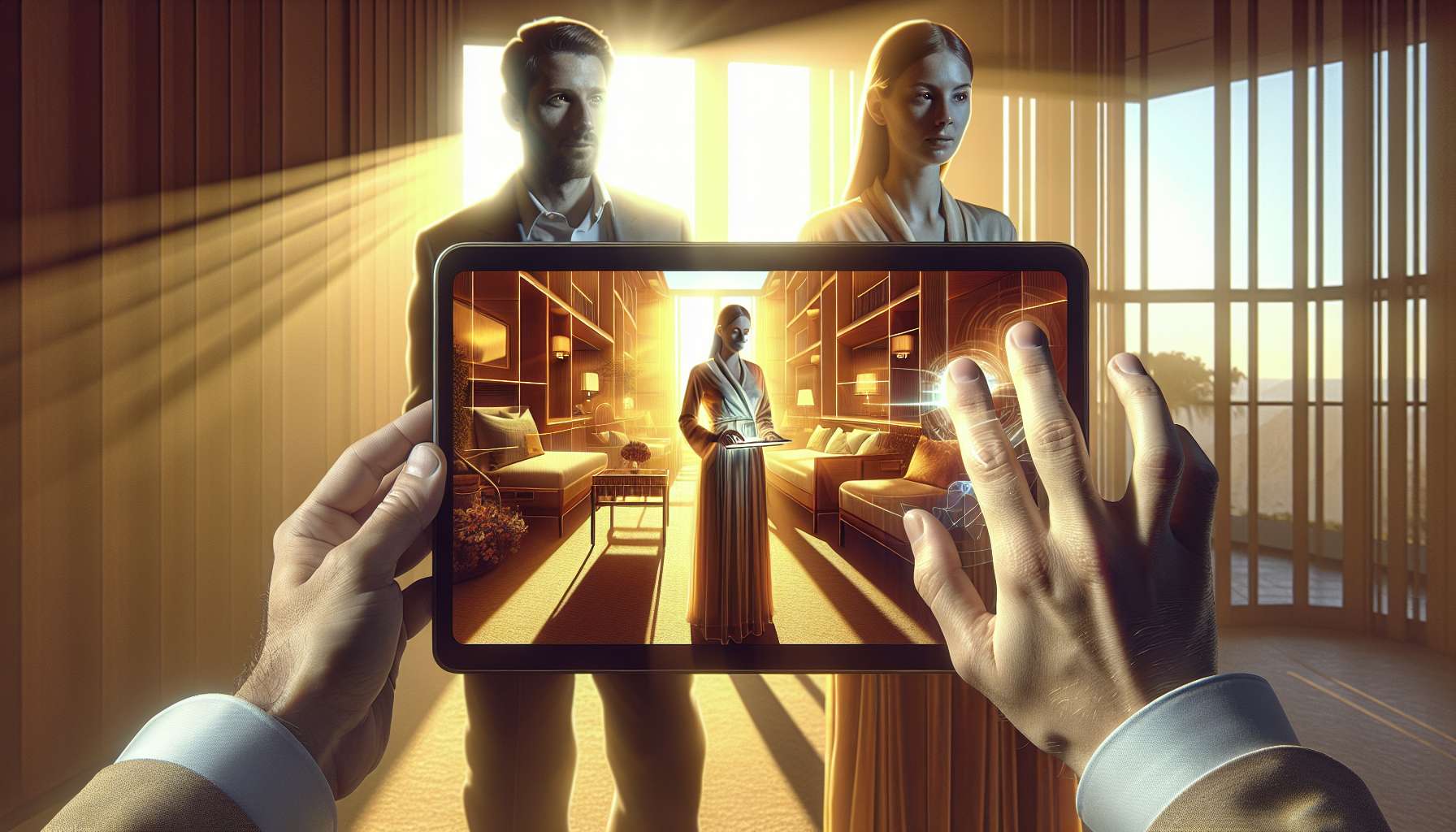Transforming the Hospitality Industry with Augmented Reality
Imagine stepping into a hotel room and being greeted by a virtual concierge who knows your preferences and can provide personalized recommendations for your stay. Or visualizing how the furniture in the room would look before making a reservation. These are just a few examples of how augmented reality (AR) is revolutionizing the hotel industry and enhancing guest experiences.
1. Immersive Virtual Tours
AR technology allows hotels to offer immersive virtual tours to potential guests. Instead of relying solely on static images or videos, guests can now explore hotel rooms, facilities, and amenities in a more interactive and engaging way. By simply using their smartphones or AR-enabled devices, guests can virtually walk through the hotel, visualize the layout, and get a feel for the ambiance before making a booking.
2. Virtual Concierge Services
AR-powered virtual concierge services are transforming the way guests interact with hotel staff. Instead of picking up the phone or waiting in line at the front desk, guests can use AR applications to access information, request services, and get recommendations. From ordering room service to booking spa appointments, AR-powered virtual concierges provide a seamless and personalized experience, enhancing guest satisfaction and convenience.
3. Interactive Wayfinding
Getting lost in a large hotel can be frustrating for guests. AR technology offers a solution by providing interactive wayfinding features. Guests can use their smartphones or AR glasses to navigate through the hotel, with virtual arrows and directions overlaid on their real-world view. This not only helps guests find their way more easily but also allows hotels to showcase additional information about points of interest within the property.
4. Virtual Room Customization
Choosing the right room can be a challenge for guests, especially when they are unsure how the space will suit their needs. AR technology enables hotels to offer virtual room customization, allowing guests to visualize different furniture arrangements, color schemes, and decor options. By simply pointing their device at the room, guests can see how it would look with different configurations, helping them make more informed decisions and ensuring a personalized experience.
5. Enhanced Guest Engagement
AR experiences can significantly enhance guest engagement during their stay. Hotels can create interactive AR content, such as scavenger hunts, historical tours, or virtual art exhibitions, to entertain and educate guests. These experiences not only provide entertainment but also encourage guests to explore the hotel’s offerings and amenities, leading to increased guest satisfaction and loyalty.
6. Augmented Dining Experiences
AR technology can transform dining experiences within hotels. Guests can use AR applications to view interactive menus, see visual representations of dishes, and even get nutritional information or allergy warnings. AR can also enhance the ambiance of the dining area by overlaying virtual decorations or providing immersive entertainment experiences, making dining a truly memorable event.
7. Streamlined Check-in and Check-out
AR technology can streamline the check-in and check-out processes, reducing wait times and enhancing efficiency. Guests can use AR applications to complete necessary paperwork, provide identification, and access their room keys digitally. This not only saves time but also reduces the need for physical contact, making the process more convenient and hygienic.
As the hospitality industry continues to embrace AR technology, the possibilities for enhancing guest experiences are endless. From immersive virtual tours to personalized concierge services, AR is reimagining the way hotels engage with their guests. By leveraging the power of AR, hotels can create unforgettable experiences, increase guest satisfaction, and stay ahead in an increasingly competitive market.





